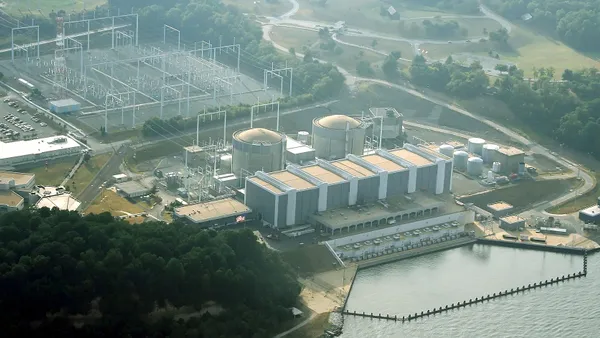Dive Brief:
-
Grid enhancing technologies could be a big boost to bringing more renewable energy onto the grid, according to experts, but regulatory and technological hurdles remain.
-
A February report from the Brattle Group, prepared for the WATT Coalition, found grid enhancing technologies — specifically advanced power flow control, dynamic line ratings and topology optimization — could enable more than twice the amount of renewable energy to be integrated onto the Southwest Power Pool. The study, highlighted during a Wednesday panel, finds the technologies could minimize wind power curtailment in the region by over 76,000 MWh per year.
-
Utilities on the panel, hosted by the American Clean Power Association, said they were interested in enhancing their power lines through this technology, but that incentives from federal regulators are critical in order to mitigate investment risks.
Dive Insight:
Updating the existing U.S. transmission system is considered a crucial step in unlocking the country's full renewable energy potential, and accelerating a zero-emission power grid. Different grid enhancing technologies can make the system more efficient and renewable-friendly in a number of ways, including through adjusting the voltage on a line to manage congestion on the system and better monitoring real-time weather conditions.
Upgrading systems in this way could bring thousands more megawatts onto the grid across the country, according to the Brattle report, reduce carbon emissions by millions of tons, and save hundreds of millions of dollars in production costs. In the Southwest Power Pool alone, the study found those technologies could enable 2,630 MW of new wind, 40 MW of new solar, lower production costs by $175 million and reduce 3 million tons of carbon dioxide.
Xcel Energy saw a less dramatic increase in renewable energy across its system in its own evaluation of the technologies across its system — about a 10-20% increase, according to Amanda King, director of strategic transmission planning at Xcel. The results are "still absolutely an improvement worth investigating," she added.
Terron Hill, director of asset development & policy for U.S. transmission at National Grid, agreed the technologies offer clear benefits, but said the Federal Energy Regulatory Commission needs to do more to incentivize utilities to adopt them, and to do so more quickly. More generators are trying to connect onto the utility grid systems than ever, he said, and utilities need to be able to keep up with that demand.
"We need FERC to give us the right incentives to do so, because now you're asking us to take on a whole bunch more risks," he said. "If something goes wrong, it's the utility that has a violation."
Further, such enhancements require adding operational costs, bringing on new tools and training a new workforce, all of which come with costs and risks, Hill said.
"I'm not saying that we shouldn't do it, but we need to have the right incentives in order to give us that motivation," said Hill.
Xcel agreed with many of the hurdles National Grid laid out.
"To speak for Xcel, a lot of what Terron said, I would say ditto," said King.
FERC is in the middle of a proceeding that would improve the transparency and accuracy of line ratings — or the maximum amount of power a line can conduct safely — by using dynamic weather ratings, rather than basing line ratings off worst-case assumptions. The commission also has a workshop in September that will attempt to address some of the risk barriers identified by panelists, said Elizabeth Salerno, economic advisor to FERC Chair Richard Glick, during the panel.
"I don't know if FERC ... is in a role to reduce that risk, but we can certainly provide an incentive to encourage folks to take on the adoption and compensate for that risk," she said. "That's the tack we're taking there."















